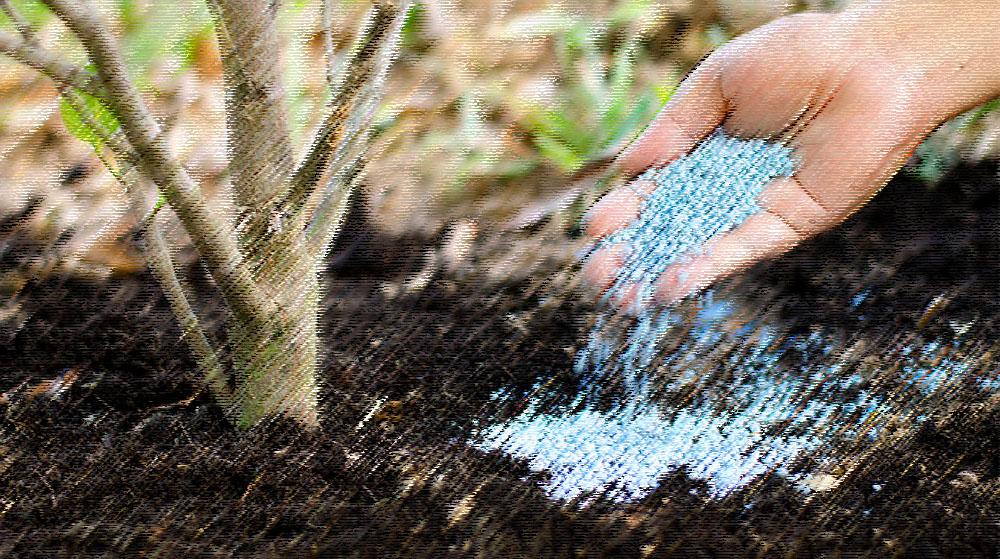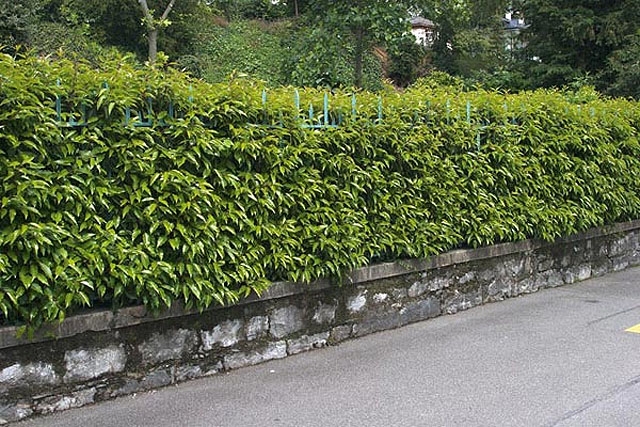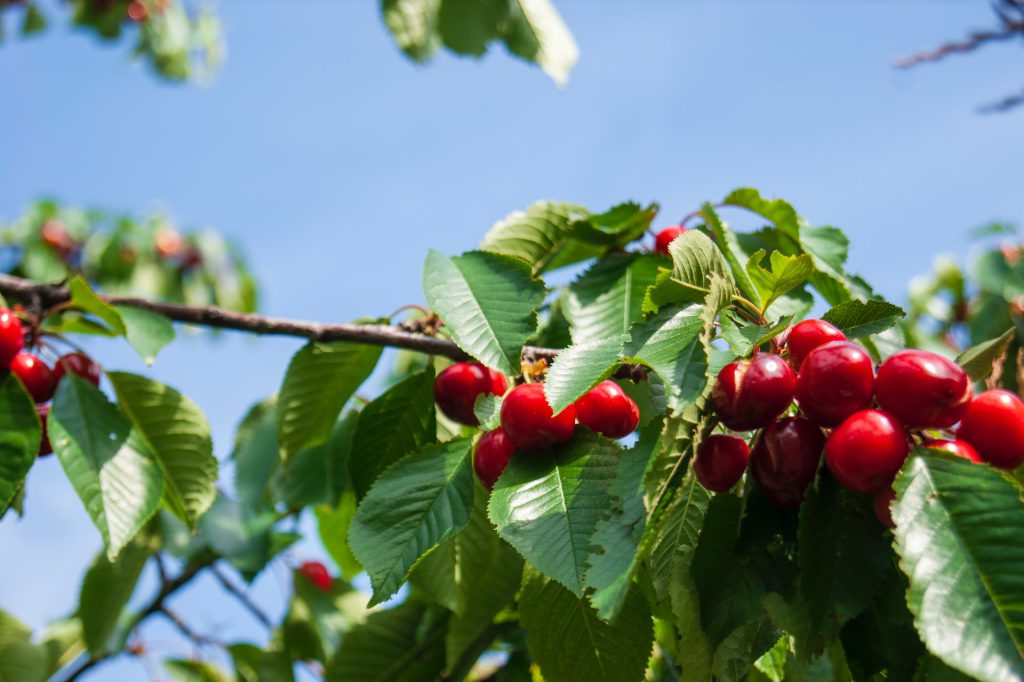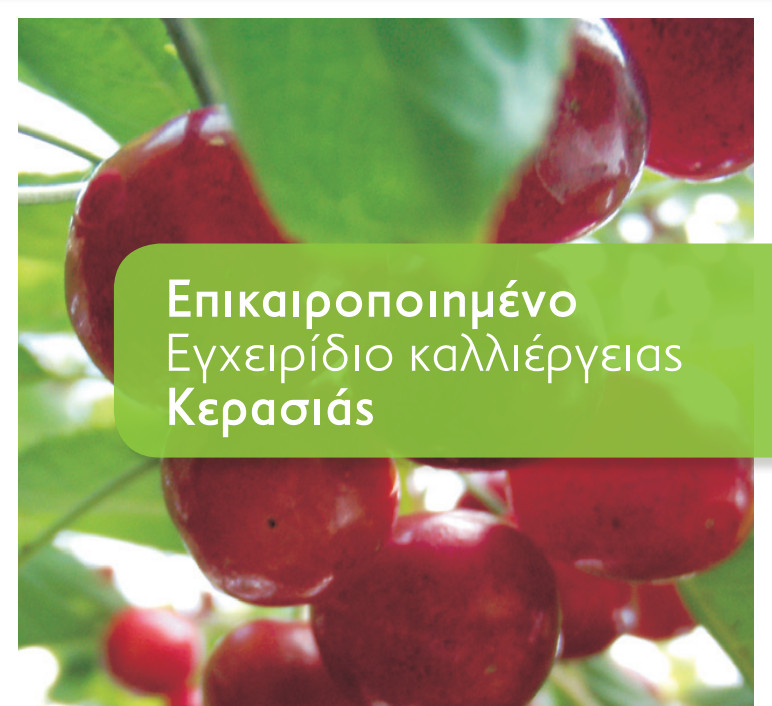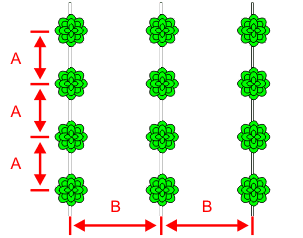In this article we will talk about what fertilizer and when to apply it on trees, vegetables and other crops.
Fertilizer is any substance provided to plants (by top dressing the soil or by foliar application), intended to supply them with the elements necessary for their nutrition.
Basal fertilization is carried out at the stage of soil preparation and before the plants are planted in the soil.
Top dressing fertilization involves the supply of nutrients to the plants in doses after they have been established in the garden or the field. It aims to replenish the nutrients absorbed by the plants and is particularly necessary for supplying nitrogen.
Non-irrigated or dry farming is the cultivation of crops without irrigation in areas where annual rainfall does not exceed 500 mm of rain.
Fertilization for Trees
Almond tree
Almond is a tree that requires nitrogen and potassium, and the excess phosphorus in the soil contributes to good root development.
Manure, phosphorous and potash fertilizers are applied in autumn (November).
The nitrate form of nitrogen is applied just before flowering, while autumn fertilization is accompanied by a small amount of nitrogen fertilizer in ammoniacal form or a compound fertilizer.
If your almond tree is in production, then we usually use a compound fertilizer such as 12-12-12 or 11-15-15.
If our soil pH is close to 7, the dosage for the compound fertilizer is 4-6 kg/tree.
For young trees, the year we plant them, it is 30-80 grams/tree of 15-30-15 fertilizer in the months of May-June for every other watering, for a total of 150 gr/tree/year.
In the second year, in instalments, the quantity reaches 250 grams of ammonium phosphate per tree.
For the type of fertilizer, in almond trees we limit ourselves to nitrogen-phosphorus fertilizers and, if there is a lack of moisture, to nitrogen fertilizers.
If the soil in our garden is calcareous, ammonia sulphate is recommended and in soils that are poor in calcium, it is recommended to lime the soil by adding calcium powder in the amount of 1 to 10 kg/tree. Liming is carried out in autumn and lasts for several years.
Pear tree
see detailed article for pear tree.
Apricot tree
see detailed article for apricot tree.
Plum tree
Plum is nitrogen demanding tree and prefers organic fertilization.
It is not particularly sensitive to a lack of phosphorus and potassium but when needed small amounts are applied every two years.
When and where manure can be applied, 15-20 kg of manure per tree is applied. Along with the manure we can add 2-3 kg of superphosphate simple/ tree, 1 kg of lime nitrate/ tree in acid soil or for calcareous soil, 450 g of ammonium nitrate/ tree, 450 g of potassium sulphate/ tree.
Fertilization is carried out in the months of February to March.
Olive tree
The olive tree has no preference for a particular type of soil because of its root system, which makes it easy to grow in a wide range of soils.
More specifically:
During the period when the buds change from leafy to flowering (February-March), olive is a tree that “sucks” the necessary nutrients from the soil reserves and from autumn organic and inorganic fertilization.
During the flowering period (April-May) the olive tree reacts very positively to nitrogen fertilization, where nitrate-ammonia nitrogen fertilizers are used.
The ammonia fertilizers are added to the soil with a 2-3 weeks’ margin.
Foliar application of an urea solution also gives good results.
In the months of July-August it bears fruit.
Organic fertilization: it is recommended to apply manure to olive trees every second or third year at around 30-50 kg/tree.
Inorganic fertilization: the annual requirements of the olive tree is 1 kg/ tree nitrogen, 1-1.7 kg/ tree phosphorus in the form of dilute superphosphate fertilizer, 1-1.5 kg/ tree potassium.
Also, olive trees are sensitive to calcium deficiency which can be corrected by adding either calcium oxide or calcium carbonate at 5-10 kg/tree for 3-5 years.
Regarding magnesium deficiency, add 2 kg/ tree of magnesium sulphate to the soil or spray your tree (foliar application) with a 2% magnesium sulphate solution.
And finally, regarding boron, we add borax or boric acid in winter, where we add 300-500 grams of borax/tree or 200-300 grams of borax oxide/tree. If our soil is calcareous and our trees are well developed we need 1 kg/tree.
Orange tree
See detailed article for orange tree.
Lemon tree
See detailed article for lemon tree.
Walnut tree
Walnut is a nitrogen-demanding tree and prefers soils rich in organic matter.
Very large trees can require 3 kg of nitrogen per tree.
In the case of walnut trees, manure (20-30 kg in a 10 m2 garden) should be added in early spring.
Phosphorus and potassium are added in the autumn to early winter, while nitrogen is added in two doses, the first in late February with 2/3 of the total amount and the remaining 1/3, immediately after fruit set.
When planting, it is advisable to add manure together with a chemical fertilizer, which we mix very well with the soil to avoid direct contact with the roots of the tree.
For the yield of our tree: 600-800 gr of 10-10-10 fertilizer in winter and 200-300 grams of ammonia sulphate in spring on an area of 10 square meters.
In case we perceive a deficiency in the soil, the following dosage is applied every two years: superphosphate fertilizer 500 gr/10 m2, 200 gr potassium sulphate/10 m2 and 500-750 gr ammonium sulphate/10 m2 or ammonium nitrate 300-450 gr/10 m2 or sodium nitrate 650-1000 gr/10 m2 or calcium nitrate 650-1000 gr/10 m2.
Chestnut tree
Fertilization with 500 gr of 5-10-5 fertilizer is recommended for each year of the tree’s age and each year.
If it is possible to add manure, then add 50-70 kg/ chestnut tree.
Cherry – Sour Cherry tree
Cherry and sour cherry trees have increased nitrogen requirements, but an increased nitrogen fertilization goes together with an increased potassium fertilization.
Trees in the production age need 6-8 kg of ammonia sulphate/tree in winter.
Every 4-5 years, in addition to nitrogen fertilization, it is recommended to add 1000 gr of simple phosphate fertilizer/10 m2 and 600-800 gr of potassium sulphate/10 m2.
The phosphorus and potassium should be applied before Christmas and should be very well incorporated.
From flowering to fruit ripening, do not fertilize.
Quince tree
The fertilization of quince trees is similar with that of pear trees, so check article on pear trees.
What is often observed in quince trees, however, is a lack of magnesium, where we do a foliar application of either 1% magnesium sulphate or 0.5% magnesium nitrate in early spring.
Apple tree
See detailed article for apple tree.
Peach tree
See detailed article for peach tree.
Pomegranate tree
See detailed article for pomegranate tree.
Fig tree
The fig tree has low nutrient requirements and is rarely fertilized.
However, before planting, 6-12 kg of digested manure can be applied to the pit, together with 0.5-1 kg of simple superphosphate fertilizer and 0.5 kg of potassium sulphate.
Beyond that, if we have fig trees, 500-600 g/10 m2 of 12-12-12 or 8-8-8 fertilizer (autumn-winter) is recommended. Otherwise from simple fertilizers: 500 g/10 m2 of ammonia sulphate, 1000 g/10 m2 of superphosphate, 200-300 g/10 m2 of potassium sulphate and in early spring 150 g of ammonia nitrate.
Pistachio tree
Pistachio tree has high requirements for the basic elements, i.e. nitrogen, phosphorus and potassium.
If our tree is in production, compound fertilizers, such as 11-15-15, 12-12-12 or some other are preferred. They are incorporated into the soil in the autumn (in the month of October for dry soils) and later and towards the end of winter for other soils.
In spring it is good to fortify our tree with ammonia nitrate, 250-350 g/10 m2.
In case our soil is calcareous and saline, we add ammonia sulphate 500 g/10 m2 and 800 g/10 m2.
Organic fertilization of pistachio trees is carried out with 80-100 kg of manure/tree, where the application is made in early autumn in the dry areas and later in the other areas. If we do not have manure, compost or other organic compounds available on the market can be used.
Caution deficiencies by over-fertilization: Over-fertilization with nitrogen can cause bud drop. Over-fertilization with phosphorus causes zinc deficiency, iron deficiency and copper deficiency. Over-fertilization with potassium causes magnesium deficiency.
Hazelnut tree
Nitrogen fertilization of hazelnut trees is carried out at the end of winter/early spring. Depending on the size of the tree, the amount varies from 0.05-10 gr nitrogen/10 m2 .
Phosphorus is applied by incorporation at a certain depth in the amount of 5 gr/tree and similarly for potassium.
In hazelnut trees there is a risk of magnesium deficiency from potassium over-fertilization.
Fertilization for Vegetables
Cucumber
For a 10 m2 garden it is recommended to apply 180-220 gr nitrogen, 260-300 gr potassium and 130-150 gr of phosphorus.
If the soil is poor in magnesium, add 50-100 gr of magnesium in the form of magnesium sulphate.
With the basal fertilization we apply manure, the entire amount of phosphorus and 2/3 of the amount of potassium. The remaining amount of nitrogen and potassium are given after 20-25 days with irrigation.
Artichoke
The basic fertilization of artichoke is carried out in autumn and includes digested manure, 500-600 gr of 0-48-0 fertilizer/10 m2 and 200-300 gr of potassium sulphate/10 m2.
Nitrogen is added in spring in the form of ammonium sulphate.
Carrot
See detailed article for carrots.
Watermelon
It is recommended to apply manure and 500-1000 gr of 8-8-8 or 15-15-15 fertilizer for a 10 m2 garden.
Manure is applied in autumn and fertilizer along the row where we have planted them or around the plant in a diameter of 0.60-1.50 m.
Another fertilization recommended for watermelon is: manure with 100 gr of phosphorus and 100 gr of potassium.
When fruit setting begins, we apply the following fertilization through irrigation: 80-100 gr of nitrogen, 40 gr of phosphorus, 100 gr of potassium per 10 m2.
Another indicative fertilization pattern for a 10 m2 watermelon cultivation is:
urea (46-0-0) 180 gr,
potassium sulphate (0-0-50) 500 gr,
simple superphosphate (0-20-0: 800 gr,
magnesium sulphate: 500 gr.
Zucchini
Initially it is recommended to apply manure or fertilizer e.g. 15-15-15 or 8-8-8 in the amount of 1-2 kg/10 m2.
The fertilizer is given 30-40 days before planting and is incorporated into the soil.
The fertilization requires 120-160 gr nitrogen, 60-80 gr phosphorus and 100-120 gr potassium
When we start the pumpkin’s cultivation, in addition to the manure, we add the entire amount of phosphorus, potassium and 40-60 gr of nitrogen.
The remaining amount of nitrogen is given in 2-3 doses, starting from flowering.
Broad beans
Before sowing broad beans, we apply by top dressing in an area of 10 m2, 200-300 gr of superphosphate simple, 150-250 gr of potassium sulphate and 50-100 gr of ammonia sulphate or calcium nitrate.
Cauliflower
Cauliflower plants are particularly demanding in terms of water and nutrients.
Before planting cauliflowers (in an area of 10 m2), we apply 400-600 gr of ammonium sulphate, 300-400 gr of superphosphate and 400-500 gr of potassium sulphate.
During germination, cauliflower has extra nitrogen requirements and therefore 100-200 gr of nitrogen fertilizer is applied either at the planting or while watering.
The first top dressing fertilization is given in the 3rd or 4th week after planting, while the second top dressing fertilization is given in the period when the heads are flowering.
When there is a molybdenum deficiency, the head does not develop at all.
Keep in mind that the cauliflower heads cannot withstand the sun at all, and therefore the plant protects them by covering it with his leaves.
Onions
There are different patterns of fertilization of onions. Each pattern is suited on the type of production we want to achieve.
Fertilization for the production of onion sets
In an area of 10 m2, we apply 60 gr of nitrogen, 100 gr of phosphorus, 100 grams of phosphorus.
Half of the nitrogen dose and the whole dose of phosphorus and potassium are given when preparing the garden’s soil. The remaining nitrogen is added by top dressing 3-4 weeks after germination.
Fertilization for the production of green onions
In our garden we apply 150-200 gr of nitrogen, 100-150 gr of phosphorus and 250-300 gr of potassium, 250 g of potassium.
25% of the nitrogen, 60% of the phosphorus and 50% of the potassium are given during the preparation of the garden.
The rest of the nitrogen is given in three doses, the first when we have the first small leaves, the second when the leaves are large and the third 45 days after the second dose.
The remaining phosphorus is given when the leaves are large.
And finally 50% of the remaining potassium is given in two doses, one when the leaves are large and the second after 45 days.
Fertilization to get onions from onion sets
The necessary doses are: 120-150 gr of nitrogen, 80-100 gr of phosphorus and 180-200 gr of potassium.
When preparing the soil, add half the dose of nitrogen and the full amounts of phosphorus and potassium.
The remaining dose of nitrogen is divided into three doses during the growth of the onions.
Fertilization for onion production from seed
We need: 150-200 gr of nitrogen, 150-200 gr of phosphorus, 250-300 gr of potassium and 20-40 gr of magnesium.
30 % of the nitrogen, all of the phosphorus, 60 % of the potassium and all of the magnesium are applied during preparation of the soil.
70 % of the nitrogen is added in three doses, the first at the 2-3 leaf stage, the second after one month and the third at bulb growth.
The rest of the potassium is also given at bulb growth.
Cabbage
Cabbage is a plant with high water requirements, especially in the full growth phase.
It needs organic and inorganic fertilization, nitrogen, potassium and a moderate requirement for phosphorus, magnesium, sulphur and calcium. Also add digested manure about 3-4 months before planting.
An indicative basic fertilization for early cultivation in a 10 m2 garden is: 400-500 gr of calcium ammonium nitrate (26-0-0), 500 gr of 0-20-0 fertilizer and 500-750 gr of potassium magnesium sulphate.
For autumn cultivation: 1 kg of 15-10-25 or 20-5-10 fertiliser, fortified with potassium sulphate or potassium magnesium sulphate.
An indicative top dressing fertilization:
For early cultivation, a fertilization with 30-60 gr of nitrogen (with ammonium nitrate) is made in the 6th week after planting.
For autumn cultivation, two topdressing fertilizations with 50-60 gr of nitrogen are applied. The first is applied 5 weeks after planting and the second one a month later (with ammonium nitrate or ammonium nitrate lime).
Lettuce
For the lettuce in our 10 m2 garden: 100-120 gr of nitrogen, 50-60 gr of phosphorus and 200-280 gr of potassium.
When our soil is deficient in magnesium, add 15-20 gr of magnesium.
To avoid the accumulation of nitrate in the leaves, it is recommended to stop nitrogen fertilization 15-20 days before harvesting the lettuce.
Lettuce is sensitive to the chlorine that may be present in the irrigation water.
Eggplant
Eggplants have similar requirements to tomatoes but are more sensitive to magnesium deficiency.
Therefor, we need: 180-150 gr of nitrogen, 180-150 gr of potassium and 40-8 gr of magnesium per 10 m2.
Where it is possible to add manure, it is good, but it should be added about 3 months before planting.
Nitrogen is given at harvest in 3-6 doses with irrigation, while phosphorus and magnesium are given to the soil with a small amount of potassium.
Okra
See detailed article for okras.
Peas
In soil with a high calcium carbonate content, peas suffer from a manganese deficiency.
Never fertilize peas with manure but only with compost if the soil is light and poor.
For a 10 m2 garden, we apply nitrogen fertilization if the soil is poor in nitrogen before sowing, or top dressing fertilization with ammonia sulphate or calcium nitrate in quantities of 250 gr and 350 gr respectively.
Το κάλιο το προσθέτουμε με τη μορφή του θειικού καλιομαγνησίου ή θειικού καλίου σε ποσότητες 400 γραμ.
Potassium is added in the form of potassium magnesium sulfate or potassium sulfate in amount of 400 gr.
Half of the potassium is applied before sowing and the rest before flowering.
Potato
In the case of potatoes, fertilizer doses depend on fertility, soil, potato variety, climatic conditions.
Potatoes require rich organic and inorganic fertilization.
Manure is certainly added.
As far as inorganic fertilization is concerned, nitrogen 150-200 gr/10 m2 is recommended. Half of the dose is applied with the basal fertilization, the rest is applied by top dressing during hoeing or in 3-4 applications with irrigation.
Phosphorus is incorporated into the soil in the amount of 200-250 gr/10 m2 several times before sowing. Potato is a “friend” of potassium. We add 300 g/10 m2 in the form of potassium sulphate and not in the form of potassium chloride (KCL). In light soils, 2/3 of the amount is applied with the basic fertilization and 1/3 is applied surface after germination either by hoeing or irrigation.
In general, the use of 800-1000 gr of compound fertilizer type 11-15-15 and surface addition of about 100 gr of ammonium nitrate, with mulching, covers the nitrogen, phosphorus and potassium requirements of potatoes. The above quantities refer to a 10 m2 garden.
Of the other minerals, magnesium deficiency in potatoes can occur when no manure is added. Correct this with 50-100 gr of magnesium sulphate or potassium magnesium sulphate, or interglacially with chelated magnesium compounds.
Pepper
Peppers are fertilized as follows:
200-300 gr/10 m2 nitrogen, 1/3 with the basic fertilizer and the rest with surface fertilizer
100-150 gr/10 m2 phosphorus, 1/2 with the basic fertilizer and the rest with surface fertilizers
200-400 gr/10 m2 potassium , 1/2 with the basic fertilization and the rest with the surface fertilization.
And finally, magnesium: 50-80 gr/10 m2 with the basal fertilization.
Melon
Basal fertilization is done in autumn where manure or compost, phosphorus, potassium and magnesium are added, while nitrogen is given just before sowing or planting.
If you have melon in your garden without irrigation, the fertilization dosage for a 10 m2 space is:
manure,
80-120 gr nitrogen,
80-120 gr phosphorus,
120-200 gr potassium and
60-90 gr magnesium.
If you have an irrigated melon, the fertilization dosage for a 10 m2 space is:
manure,
120-250 gr nitrogen,
80-150 gr phosphorus,
150-250 gr potassium and
80-120 gr magnesium.
The fertilizers are applied either with the basal fertilization or with top dressing fertilization.
Nitrogen is applied at 30% at planting, 35% at flowering and the remainder during plant growth.
Phosphorus is applied at 80 % with the manure and the remainder during flowering in the form of ammonia phosphate at watering.
Potassium, 50-70% in the form of basal fertilization and the remainder with nitrogen in the form of potassium nitrate.
Magnesium is given in full with the basal fertilization.
Garlic
The fertilization treatment is the same as for onions, presented earlier.
Spinach
The fertilization pattern of spinach is as follows per 10 m2 garden:
60-100 gr of nitrogen,
50-80 gr of phosphorus and
100-140 gr of potassium.
If the soil is of medium nutrient content then we adjust the fertilization pattern as follows:
60 gr of nitrogen,
240 gr of phosphorus and
108-110 gr of potassium.
In addition, a mixed fertilizer of type 8-8-8 can be used in an amount of about 2 kg/10 m2.
Asparagus
For the fertilization of asparagus in a 10 m2 area it is recommended:
100 gr of nitrogen. The time of application of nitrogen fertilization is not particularly important and in fact we apply the entire amount of nitrogen after we have harvested our asparagus.
Phosphorus, in the first years, a dose of 100 gr has a positive effect, while in the course of the application it should not exceed 50 grams.
Potassium, 150 gr are applied initially as basal fertilization, while later the dose can reach 350 gr.
Tomato
For the fertilization of table tomatoes on a 10 m2 area, start with the basal fertilization:
Apply 1 kg/10 m2 of 11-15-15 fertilizer and
magnesium sulphate 300 gr/10 m2,
potassium nitrate in 5 doses of 150 gr/10 m2 and
magnesium sulphate 300 gr/10 m2.
Beans
For basal fertilization of beans, potassium magnesium sulphate is one of the most suitable fertilizers and phosphate is also necessary.
An indicative fertilization pattern for a 10 m2 area is:
200-250 gr of 16-20-0 fertilizer,
300-500 gr of 0-20-0 fertilizer and
300-500 gr of potassium magnesium sulphate.
The basal fertilization is done 15 days before planting.
Organic fertilization: If manure is used, you don’t need to fertilize with nitrogen.
Top dressing fertilization: It is deemed necessary when we have a growth problem in dry beans. In this case we fertilize with ammonium nitrate 100-150 gr/10 m2.
Other crops
Kiwi
Utilizes the nutrients found in the surface soil horizon.
It is common to use solid fertilizers but the application of fertigation has better results.
A good basal fertilization consists of:
manure,
1500-1750 gr of superphosphate of type 0-21-0 and
500-600 gr of potassium sulphate of type 0-0-50.
Nitrogen should be applied every year, while phosphorus and potassium should be applied based on the soil’s needs.
Vine
The dose and type of fertilizer for vineyards is dependent on the soil.
All fertilization patterns are for a 10 m2 area:
(a) 500-1000 gr of ammonia sulphate (20%) or 1300 gr of lime nitrate (15%).
Continue with 0-200 gr of simple superphosphate (20%) or 0-100 gr of concentrated superphosphate (40%).
And finally 400-500 gr of potassium sulphate (48%).
(b) Ammonium sulphate (20%) : 750-1000 gr of ammonium sulphate (20%) or 1000-1300 gr of lime nitrate (15%), 300-400 gr of simple (20%) or 150-200 gr of concentrated (40%) superphosphate and 370-410 gr of potassium sulphate (48%) and 250-320 gr of magnesium sulphate (25%).
Nitrogen fertilization should be applied in early spring. Ammonia fertilizers, especially ammonia sulphate, are applied earlier and lightly covered because they need more time and water to take effect. Nitrate fertilizers are applied until early spring because they act much faster.
Potassium fertilizer is incorporated into the soil in January on heavy soils and in February on light soils.
Phosphorus is applied in the autumn.
Manure, compost, peat and other commercially available organic fertilizers are used for organic fertilization.
Cotton
Fertilization pattern depends on the geographical area.
For example, we fertilize differently in Macedonia, Greece, differently in Central Greece and differently in the Peloponnese.
The fertilizers used for cotton are: simple nitrogenous fertilizers, e.g. ammonium sulphate, ammonium nitrate, etc., simple phosphate fertilizers, e.g. 0-20-0 and 0-46-0, simple potassium fertilizers such as potassium sulphate, compound fertilizers such as 20-10-10, 16-20-0, 11-15-15, etc., and mixed N-P-K fertilizers.
Blueberries
The greatest nutrient requirements of blueberries are from the beginning of flowering until the germination period of the new vines.
All quantities are given for a 10 m2 area.
The annual nutrient requirements are 30 gr of nitrogen, 30 gr of phosphorus and 50 gr of phosphorus.
When your blueberries are in the fruiting season then apply 300-400 gr of ammonium sulphate, 200-300 gr of superphosphate and 160-200 gr of potassium sulphate.
Corn
All quantities are given for a 10 m2 area.
We need 180-240 gr of nitrogen half of which we apply in ammonia form at sowing and the rest when the plants reach a height of 50-60 cm.
As for phosphorus, we need 50-100 gr and we can use ammonium phosphate (20-10-0).
In case of potassium deficiency, we apply 200-250 gr of ammonium phosphate (20-10-0).
In case of potassium deficiency, we need to use 200-250 gr potassium.
Alfalfa
Alfalfa does not need nitrogen fertilization but calcium, phosphorus and potassium.
All quantities are given for a 10 m2 area.
We fertilize only if the plants are weak, at a rate of 50-75 gr of calcium nitrate.
We do not use ammonia sulphate because there is a risk of burning the foliage.
We supply the alfalfa with phosphorus and potassium before sowing, 60-100 gr of phosphorus and 120-140 gr of potassium.
Strawberry
All quantities are given for a 10 m2 area.
The basic fertilization requirements of strawberries are as follows: 120-150 gr of nitrogen, 60-80 gr of phosphorus, 200-250 gr of potassium and 50-70 gr of magnesium.
Nitrogen and potassium are added in 3 doses. The first dose is given at the beginning of germination, the other two doses during the course of growth.
Phosphorus and magnesium are given 60-70% before planting and the rest later, after planting.
Where manure is available, it is good to apply it before planting and together with 60-80 gr of nitrogen and 150-180 gr of potassium.
In the spring before flowering, it is necessary to apply top dressing fertilization with potassium nitrate.
In case of calcium deficiency, 5 kg of calcium is added to a 10 m2 garden.
Damage to the environment and human health from the improper use of fertilizers
Damage from chemical fertilizers is caused by over dosage, by their residues in the soil and by their movement in water (river, sea, lake).
The nitrates that end up in groundwater are not only caused by the amount of fertilizer that is not “used” but also result from the decomposition of plant residues, soil organic matter and the run-off of untreated water.
Nitrogen losses from fertilizers are not all the same. Most ammonia is lost from urea, while smaller amounts are lost from ammonia sulphate and nitrate. Nitrogen losses are around 20-30%.
In addition to chemical fertilizers, organic fertilizers also pollute the environment.
The loss of nutrients is inextricably linked to the type of soil and the way in which fertilizers are used.
Light soils allow nitrate to move more easily and thus pollute groundwater, while nutrients that end up in lakes and rivers disturb the balance in the ecosystem and increase the population of certain organisms.
The intensive addition of fertilizers to the soil leads to high levels of certain elements, and toxic densities in plants, making the products produced unfit for consumption.
This phenomenon is most often observed with the addition of nitrogenous fertilizers, where plants accumulate a quantity of nitrates which are not metabolized. In crops with increased leaf area, e.g. lettuce, the amount of nitrate is much higher.
The part of the plant that is for consumption also plays an important role. The nitrate content is always higher in the shoots and leaves and less in the fruits.
It has been observed that crops with a short growing season, early vegetable varieties and insufficient light intensity (mainly in greenhouses) are causes of higher nitrate levels.
The European Union has decided that water consumed by humans and animals should not contain more than 11.3 mg/liter of nitrate nitrogen.
The rational use of fertilization significantly reduces the impact and increases the efficiency of fertilizers.
Fertilization should be carried out according to the instructions and advice of those in charge, no more doses should be applied than necessary for the plants.
Nitrogen fertilization in sandy (light) soils should be applied in several small doses and according to the growth of the plants.
The amount of fertilization in autumn and winter should be limited (especially when the garden is in an uncovered area) because 90% of nitrogen losses occur in these months.
Immediate incorporation of fertilizers into the soil.
Proper treatment of diseases, pests, weeds, because it helps to make better use of the nutrients in the fertilizers.
Use slow-release nitrogen fertilizers (fertilizers that release their nutrients load in several months and without the risk of burns).
Sophia Papazoglou, Greek Agronomist
Agronomist MSc “Environmental Management”
Tags: FERTILIZATION • FERTILIZER • SOFIA PAPAZOGLOU AGRONOMIST • TREES • VEGETABLES

